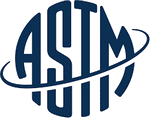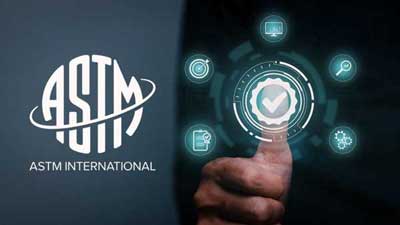 |
American Society for Testing and Materials |
What is ASTM? |
Organized in 1898, the American Society for Testing and Materials (ASTM) is one of the world's largest international standards developing organizations.
At the ASTM, manufacturers, users, consumers and others from around the world work together to develop voluntary consensus standards.
ASTM standards are developed under a process that embraces the World Trade Organization Technical Barriers to Trade Agreement principles. The ASTM standards development process is open and transparent, allowing individuals and governments to participate directly, and as equals, in a global consensus decision.
Standards
Thirty thousand ASTM members from 125 countries bring their technical expertise to the development of ASTM's 12,000 standards. These standards are used and accepted worldwide and cover areas such as metals, paints, plastics, textiles, petroleum, construction, energy, the environment, consumer products, medical services and devices, and electronics.
Development of standards
The open process in which ASTM standards are developed is one reason why so many and such a broad range of industries have done their diverse standards development work within ASTM.
Professionals from all over the globe participate in the ASTM system which recognizes technical expertise, not country of origin. With a high level of technical quality at the core of the ASTM standard, almost 50 percent of ASTM standards are distributed outside the United States.
To facilitate broad global input, ASTM uses online technologies that encourage open participation and responsiveness to industry needs. They include Internet-based Standards Development Forums enabling 24/7 access worldwide, on-line balloting, electronic minutes and templates, virtual meetings, and state-of-the- art distribution methods.
Services of ASTM
In addition to this accommodating standards development atmosphere, ASTM provides services that expand the knowledge and application of standards. ASTM's programs include symposia, proficiency testing programs, publications in a variety of formats, and technical training courses. ASTM publishes a monthly magazine, Standardization News, which covers the topic of standards development around the world.
Use of standards
The standards of ASTM are used in research and development, quality systems, product testing and acceptance, and commercial transactions all around the globe. They are integral components of today's competitive business strategies.
Annual book of ASTM
The Annual Book of ASTM Standards for Steel consists of 8 volumes. It contains formally approved ASTM standard classifications, guides, practices, specifications, test methods and terminology and related material such as proposals. These terms are defined as follows in the Regulations Governing ASTM Technical Committees.
Covers..
- Steel Pipes, Tubes and Fittings
- Steel Plates for General Structure
- Steel Plates for Boiler and Pressure Vessels
- Steels for Machine Structural Use
- Steels for Special Purposes
The following data is given for each standard..
- Standard number and year
- Grade
- Chemical composition
- Mechanical properties (yield point, tensile strength, notch toughness)
When deemed useful, steel type, manufacturing method, thickness of plate, heat treatment, and other data are described.

Reference.. ASTM